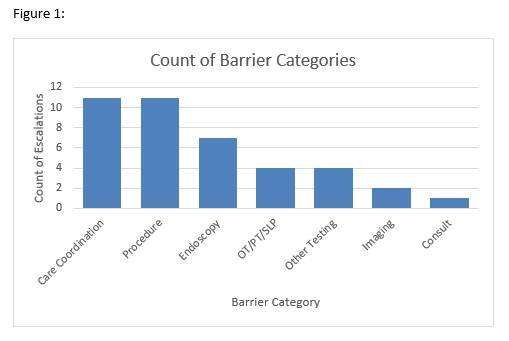Background: Many efforts to improve bed availability in hospitals with high occupancy focus on encouraging providers to discharge patients earlier in the day without making substantial changes to workflows or to address barriers to patient care progression. Unfortunately, when this is most needed is often when teams are at their busiest with high census and need to balance competing priorities, including seeing new patients and discharging other patients. As a result, this can lead to lack of engagement by teams in hospital efforts to improve patient flow.
Purpose: To pilot an intervention to improve patient flow that provides assistance in addressing barriers to patient care progression that physician teams are encountering.
Description: An email address and pager were set up to receive information regarding barriers to patient care progression from the 8 general medicine teams and that would be monitored and responded by clinical leadership of the general medicine service. To aid the general medicine clinical leadership in their responses, a resource guide was developed by hospital leadership to identify a point person in key departments that would be responsible for helping to address barriers to patient care progression brought forward through the GMS Escalate pathway. The types of barriers that were escalated were recorded (Figure 1) as well as the response time, percent with positive resolution, and approximate bed hours saved. During the first 8 weeks of the program, 41 issues were escalated of which 35 (85%) were deemed in scope. Seventy-six percent of escalations were sent between 9am – 5pm, during which the response time was 1.1 hours. The mean response time to escalations sent between 5pm-9AM was 1.4 hours. Fifty-one percent of escalations were able to be escalated with a positive resolution, while another 34% resolved through normal workflows without additional escalation. The escalations resulted in an estimated 240 bed hours saved for the institution. The intervention was positively received by providers.
Conclusions: Creating a formal escalation pathway for barriers to patient care progression can be used to engage teams in patient throughput in a way that benefits patients, providers, and the hospital.

